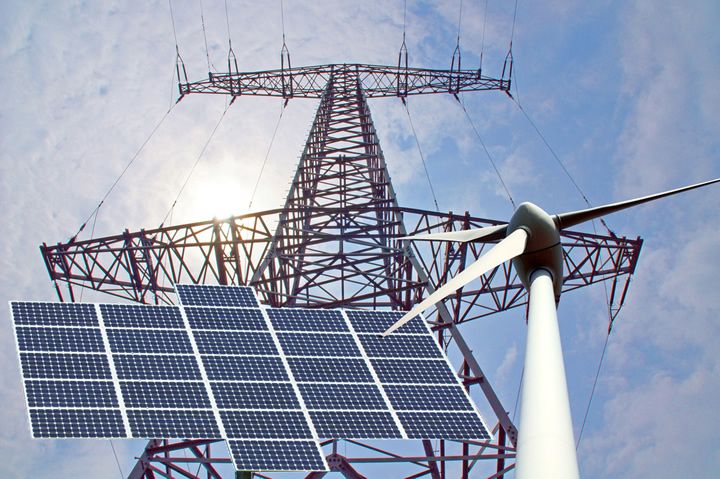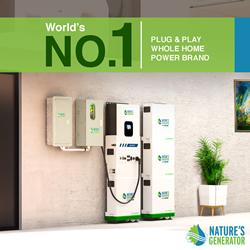Traditional alternating current (AC) transmission systems face limitations in their abilities to handle the variability of renewable energy sources, an issue compounded by the persistent challenges of an aging infrastructure.
 Revolutionizing Power Grids: The Essential Role of HVDC and FACTS in Modern Energy Transmission
Revolutionizing Power Grids: The Essential Role of HVDC and FACTS in Modern Energy Transmission

Suresh Subramanian, senior member of IEEE
As global energy demands soar and the transition to renewables accelerates, it is imperative for power grids to evolve so that electricity can be efficiently transported over longer distances while maintaining stability and reliability. Traditional alternating current (AC) transmission systems face limitations in their abilities to handle the variability of renewable energy sources, an issue compounded by the persistent challenges of an aging infrastructure.
This is where high-voltage direct current (HVDC) and flexible AC transmission systems (FACTS) can work as a transformative duo, reshaping the future of power transmission. Although some research is still necessary to determine the full scale of this solution, evidence indicates that the industry can establish a better energy future.
Assessing the technical importance of HVDC and FACTS
HVDC is unrivaled in efficiently transmitting bulk power over long distances (hundreds of thousands of kilometers), including the integration of offshore wind power into onshore grids with minimal energy loss, particularly for offshore wind farms and cross-border interconnections. Meanwhile, FACTS technologies, including Static VAR Compensators (SVCs) and Static Synchronous Compensators (STATCOMs), enhance grid performance by stabilizing voltage, reducing congestion, and optimizing power flow.
The increasing demand for clean energy onshore and offshore combined with the technological advancements in HVDC and FACTS has initiated an integrated approach that improves energy transfer efficiency from generation to consumption. HVDC technology also enables the interconnection of asynchronous networks, including grids operating at different voltages and frequencies, while facilitating the interconnection of synchronous networks to enhance grid stability and operational flexibility. For example, offshore wind farms in the United States can be linked to Eastern power grids and be interconnected with Central grids via HVDC, ensuring seamless power transmission to other regions.
Other key characteristics of HVDC enable it to facilitate cross-border and intercontinental energy trade while utilizing less land corridor space for transmission compared to AC transmission. First, HVDC utilizes two conductors compared to three in AC. Second, HVDC significantly reduces transmission infrastructure costs and minimizes environmental impact. HVDC also enables precise power flow control between grids, enhancing stability and management.
Continued advancements in voltage source converter (VSC) technology have further improved power flow regulation, significantly reducing response time and improving overall system reliability and efficiency. While HVDC ensures efficient bulk power transfer, FACTS technologies provide necessary grid support by stabilizing voltage and optimizing power flow in the AC network.
In response to voltage fluctuations within grids, FACTS devices rapidly inject or absorb reactive power as needed to maintain system stability and reliability. Through reactive power compensation and continuous voltage regulation, FACTS technology enhances voltage stability and power quality while mitigating disturbances. It also strengthens grid resilience by stabilizing operations during sudden load variations and fluctuations in power consumption.
HVDC and FACTS as complementary technologies
When strategically integrated, FACTS and HVDC technologies create a complementary framework for optimizing the transmission of clean energy sources, allowing for efficiency and reliability in modern power networks. Despite the growing adoption of renewable energy, grid voltage instability remains a critical challenge as energy demands increase. At the same time, transmission infrastructure has kept pace, placing stress on existing power lines and increasing resistance, leading to higher transmission losses and reduced efficiency. Ensuring appropriate voltage levels allows greater power transfer through the existing conductor without additional infrastructure. While HVDC excels in long-distance bulk power transfer, FACTS technologies are essential for grid stability as they mitigate voltage fluctuations and ensure efficient power distribution.
SVCs consist of thyristor-controlled reactors and switched capacitors that dynamically provide reactive power compensation, stabilizing voltage levels. In contrast, STATCOMs operate with voltage source converters, allowing faster and more precise reactive power control. With STATCOM’s rapid response capability, grid disturbances are mitigated (or prevented overall).
A variety of relevant case studies demonstrate the effectiveness ofHVDC and FACTS working in conjunction:
- Application Of Innovative Transmission Technologies For The Development Of The Future European Power System. This investigation explored several technical, environmental, and economic features across three types of advanced transmission technologies—the static synchronous series compensator, voltage source converter HVDC, and gas insulated line.
- HVDC and FACTS: Revolutionizing Low-Carbon Electricity Grids. This example details an analytical modeling of high-power converters for an approach for stability analysis of HVDC, FACTS, and wind power delivery systems.
- Interaction Between Nearby VSC-HVDC Converters, FACTs Devices, HV Power Electronic Devices, and Conventional AC Equipment. This research focuses on the interaction between VSC-HVDC converters and other power electronics or passive HV devices.
- DNV Launches Joint Industry Project to Identify Barriers to the Use of HVDC Transmission in the U.S. Grid. A joint industry project identifies changes to electrical standards and standardization needed to enable the connection of HVDC transmission into the U.S. electric grid.
Expected outcomes of HVDC and FACTS utilization
Together, HVDC and FACTS optimize power flow, minimize transmission losses over long distances, and significantly improve efficiency, reliability, and sustainability. Maximizing the utilization of existing infrastructure also eliminates the need for new or upgraded transmission lines, thereby reducing infrastructure costs. Additionally, operational overhead is lowered through the maintenance of required voltage levels, minimizing stress on existing substation components, and extending the lifespan of electrical equipment.
Integrating renewable energy into the power grid presents opportunities and environmental challenges. As inherently intermittent sources, wind and solar energy require advanced grid technology to ensure stability and reliable power transmission. HVDC and FACTS facilitate seamless integration of renewables by enhancing grid flexibility and stabilizing voltage fluctuations caused by variable generation patterns. By enabling higher penetration of wind and solar energy, FACTS contribute to lower carbon emissions, reduced transmission losses, improved overall efficiency, and decreased reliance on conventional power generation.
Steps for successful smart grid integration
While the benefits of HVDC and FACTS technologies are wide ranging, a cautious approach is necessary when integrating into the smart grid, particularly in real-time monitoring and control of power flows. It’s essential to prioritize investments in advanced grid technologies that enable decentralized operations, allowing stations to operate independently in the event of major grid failures. These advancements represent possible innovations for future transmissions.
The United States Department of Energy (DOE) has been instrumental in driving grid modernization by supporting the transition to a carbon pollution-free power sector by 2035 and a net-zero emission economy by 2050, all while maintaining grid reliability and resilience. Also, DOE recently announced an $11 million investment in HVDC transmission research and development program, aiming to reduce transmission system costs by 35 percent by 2035.
As the power industry advances, key performance indicators (KPIs) such as transmission losses, power transfer capacity, reactive power compensation, capital and operational cost savings, and overall system reliability will remain critical benchmarks for measuring the success and long-term impact of HVDC and FACTS integration.
Suresh Subramanian is a specialized engineering professional with more than 20 years of experience in power systems, expertise in grid integration of HVDC, FACTS, and substations. His expertise spans design, project execution, risk management, and stakeholder coordination. Suresh holds a degree in electrical engineering and is a senior member of IEEE. Contact him at sureshsubramanianleus@ieee.org.
The content & opinions in this article are the author’s and do not necessarily represent the views of AltEnergyMag
Comments (0)
This post does not have any comments. Be the first to leave a comment below.
Featured Product

